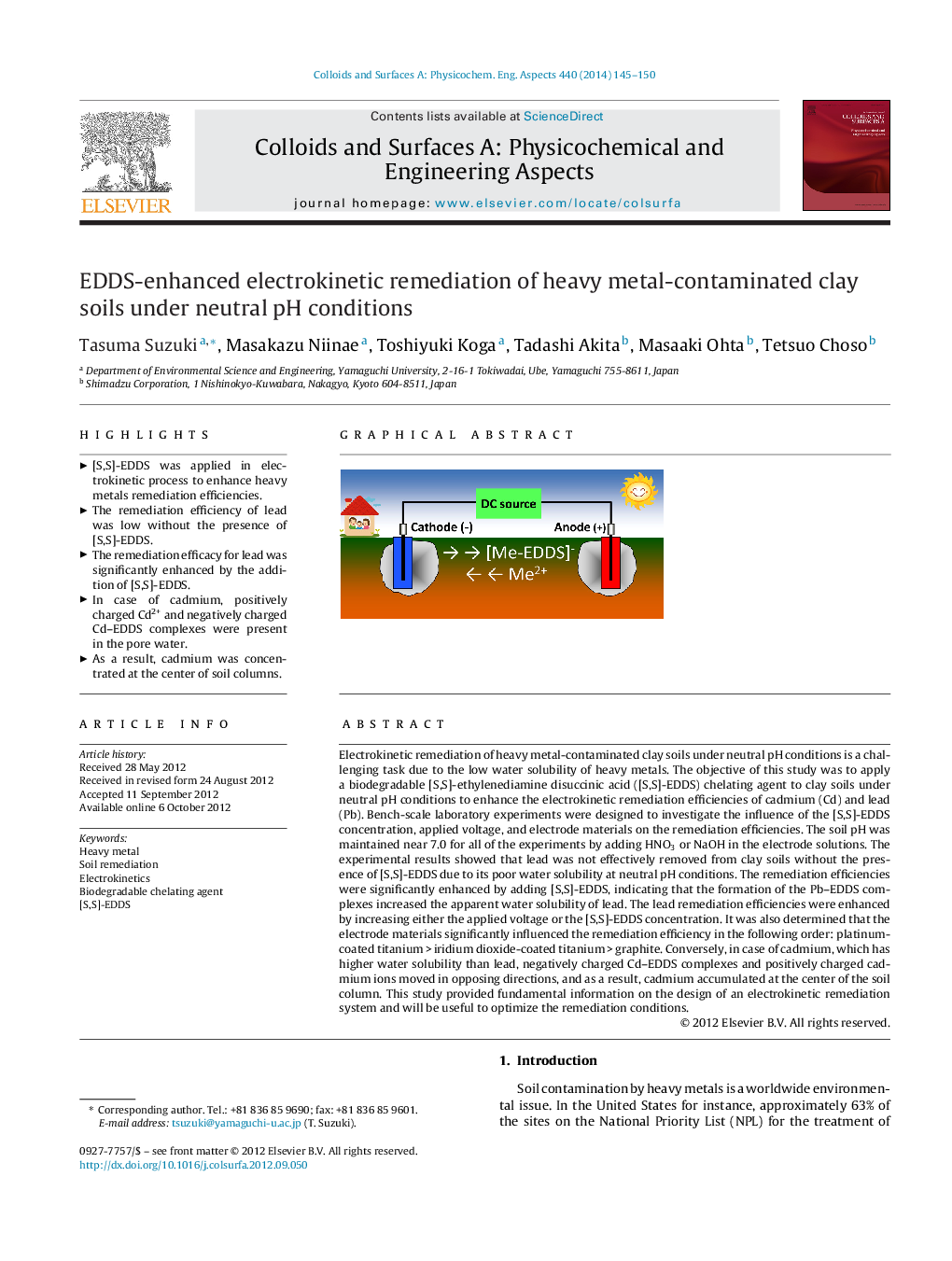| Article ID | Journal | Published Year | Pages | File Type |
|---|---|---|---|---|
| 593159 | Colloids and Surfaces A: Physicochemical and Engineering Aspects | 2014 | 6 Pages |
Electrokinetic remediation of heavy metal-contaminated clay soils under neutral pH conditions is a challenging task due to the low water solubility of heavy metals. The objective of this study was to apply a biodegradable [S,S]-ethylenediamine disuccinic acid ([S,S]-EDDS) chelating agent to clay soils under neutral pH conditions to enhance the electrokinetic remediation efficiencies of cadmium (Cd) and lead (Pb). Bench-scale laboratory experiments were designed to investigate the influence of the [S,S]-EDDS concentration, applied voltage, and electrode materials on the remediation efficiencies. The soil pH was maintained near 7.0 for all of the experiments by adding HNO3 or NaOH in the electrode solutions. The experimental results showed that lead was not effectively removed from clay soils without the presence of [S,S]-EDDS due to its poor water solubility at neutral pH conditions. The remediation efficiencies were significantly enhanced by adding [S,S]-EDDS, indicating that the formation of the Pb–EDDS complexes increased the apparent water solubility of lead. The lead remediation efficiencies were enhanced by increasing either the applied voltage or the [S,S]-EDDS concentration. It was also determined that the electrode materials significantly influenced the remediation efficiency in the following order: platinum-coated titanium > iridium dioxide-coated titanium > graphite. Conversely, in case of cadmium, which has higher water solubility than lead, negatively charged Cd–EDDS complexes and positively charged cadmium ions moved in opposing directions, and as a result, cadmium accumulated at the center of the soil column. This study provided fundamental information on the design of an electrokinetic remediation system and will be useful to optimize the remediation conditions.
Graphical abstractFigure optionsDownload full-size imageDownload as PowerPoint slideHighlights► [S,S]-EDDS was applied in electrokinetic process to enhance heavy metals remediation efficiencies. ► The remediation efficiency of lead was low without the presence of [S,S]-EDDS. ► The remediation efficacy for lead was significantly enhanced by the addition of [S,S]-EDDS. ► In case of cadmium, positively charged Cd2+ and negatively charged Cd–EDDS complexes were present in the pore water. ► As a result, cadmium was concentrated at the center of soil columns.
